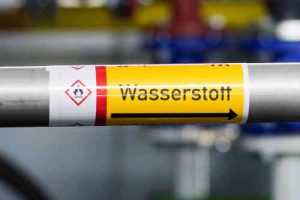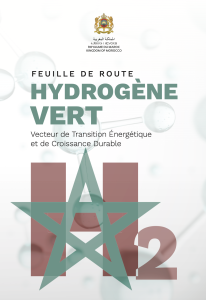H2. the green Moroccan hydrogen gameplan. what are Morocco’s ambitions?
- Morocco magically combines the potential of renewable energies and geographical proximity to the European continent.
- 3,000 hours of sun every year, more than 5 kilowatt-hours per square meter per day.
- Wind power with a load factor in some regions of more than 70 percent.
- a Government and Royal commitment manifested in the National Strategy for Sustainable Development SNDD.
- competent national institutions like MASEN, IRESEN,…
- ambitious renewable energy targets.
- ambitious NDCs, the target is to reduce GHG emissions by 42% by 2030 against BAU (conditional on financing, the unconditional target is a 17% reduction).
- a National Commission for Power-to-X under the aegis of the Ministry of Energy Transition and Sustainable Development.
- a Moroccan Green Hydrogen Roadmap, Vector of Energy Transition and Sustainable Growth, 2022.
- a Moroccan Green Hydrogen Offer, 2024, to the world.
- Morocco’s proximity to Europe, Morocco is already interconnected by a gas pipeline to Spain.

With industrial efficiency advances and economies of scale for water electrolysis (due to widespread adoption), combined with cheap solar and wind electricity from the desert (10-20 EUR / MWh one day), it may be possible to achieve production of cheap, around 1 EUR / kg green hydrogen price one day.
Obviously, Morocco has to ramp up and deploy huge renewable production capacities first, for water desalination and electrolysis.
But Morocco, unlike some contenders in this space, has its own valid reasons to do this.
Green hydrogen in Morocco by order of importance :
- produce green hydrogen and then ammonia (NH3, through the Haber-Bosch process, nitrogen fixation), in import substitution of current grey ammonia.
Morocco has about 75% of the world’s estimated reserves of phosphate rock and mines, it is the third-largest producer of phosphate and a major exporter of phosphate and fertilizer. The other major ingredient in the production of fertilizer, ammonia, is currently entirely imported, which costs Dollars. - use hydrogen in other industrial and chemical processes that need it.
- hydrogenation, e.g. methanol synthesis, biofuels, Sustainable Aviation Fuel (SAF), the food industry, and many others.
- hydrocracking of heavy hydrocarbons into lighter molecules, petroleum refining.
- desulfurization of petroleum fractions, particularly diesel, but maybe a lot of this will go away one day.
- the steel industry, as a direct reducting agent, for some iron ores.
- the cement industry, as a non-fossil fuel.
- Morocco will become an important Hydrogen Hub, attracting industries desiring to benefit from the future H2 and renewable energy infrastructure in Europe’s backyard. Morocco will use its hydrogen before exporting it.
- the proximity to the European continent makes Morocco a leading strategic partner. Several European countries, notably Germany, are interested in the hydrogen energy partnership.
Morocco could eventually become one of the main exporters of green hydrogen and derivative products “Power-to-X (PtX)”, destined for Europe, Morocco feels largely qualified to play this key role. - use hydrogen as a means of long-term energy storage and to manage intermittency, to re-produce electricity when needed, in an electricity network dominated by renewables, at times when renewables are not sufficiently available, in a flexible way, and decentralized. It will be seen to what extent this happens.
- use hydrogen in a future natural gas network (Morocco’s national natural gas plan) mixed with methane to generate heat, and thus decarbonize the heat needs of Morocco’s industry. This is on the agenda as it is elsewhere else, and is nonsense as elsewhere, as the calorific value per volume delivered will be lower, less useful, and transport and compression needs will be higher hence more costly. Alternative solutions like direct electrification will be cheaper.
While time will tell, how much hydrogen will be shipped in the future decarbonized world, the export of green hydrogen is important to Europe. It is important that this can be managed one day technically and economically so that Europe can preserve its industrial relevance. For Morocco, this European driver helps forge this major industrial partnership. - using hydrogen for sustainable mobility in vehicle-integrated fuel cell cars, if one day this becomes a viable vector, which we in generizon firmly believe it won’t.

It is more than clear, Morocco is there for a big splash, this is Morocco’s century. Morocco’s geostrategic position at the gateway between the continents, with a steady hand in politics and a serious industrial and renewables agenda that serves its emerging economy, make the country the ideal European partner.
Here we can produce the GigaWatts cheaply that might one day be used in an industrialized Morocco, or even exported and bring a Gulf and oil-like bonanza to the Kingdom.
The Kingdom of Morocco has therefore initiated a regional dynamic that aims to create an economic and industrial sector around green molecules, particularly hydrogen, ammonia, and methanol, in order to consolidate its energy transition, reduce its greenhouse gas emissions and also support the decarbonization of partner countries.
The Green Hydrogen Roadmap, a Vector of Energy Transition and Sustainable Growth, describes its development stages up to 2030, 2040, and beyond, going in tandem with the evolution of technologies for the production, storage, transport, and usage of hydrogen in all the various fields.
In March 2024 the Moroccan government presented Morocco’s Green Hydrogen Offer. The offer is aimed at investors or consortiums wishing to produce green hydrogen and its derivatives in the Kingdom, on an industrial scale, and to address either the domestic or the export market, or both. The Moroccan H2 offer applies to integrated projects upstream from electricity generation from renewable sources and electrolysis to the downstream transformation of green hydrogen into ammonia, methanol, synthetic fuels, and more, as well as the associated logistics. Investors will be able to directly address the Regional Investment Centers of the Region concerned by their project or the Moroccan Agency for the Development of Investments and Exports.
The Moroccan State has identified and dedicated a significant public land area of approximately 1 million hectares with high potential in terms of green hydrogen production, this land will be accessible to investors.
Morocco plans to capture up to 4% of the global demand for the green molecule, and thanks to its geographical and strategic position this is very much possible.
In 2021 the Moroccan roadmap for green hydrogen estimated national and international base demand for Moroccan green hydrogen and its derivatives at 13.9 TWh/year in 2030, 67.9 in 2040, and 153.9 TWh/year in 2050. For this base demand scenario, the required renewables installed production capacity is estimated at 8.0, 36.7, and 78.2 GW, for the years 2030, 2040, and 2050 respectively. These shall provide renewable energy for electrolyzer, desalination, and Haber-Bosch plants. More optimistic scenarios are also cited.
Well, this is a splash.
We will see how it all develops, internationally and in Morocco.

